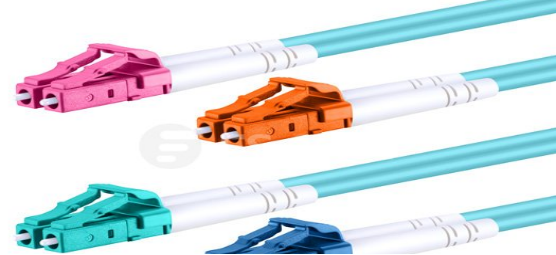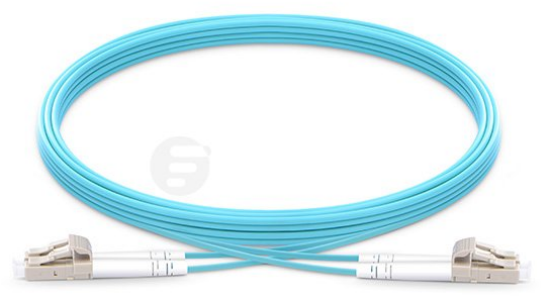Great Challenge with Existing Multimode Patch Cables
As we know, single mode fiber cables are suitable for 10 Gigabit Ethernet due to its advantages of high speed and capacity. For instance, LC to LC single mode fiber patch cable and LC to SC single mode fiber patch cable, work with high-performance in 10 Gigabit Ethernet. However, taking the manufacturing cost of single-mode patch cable into consideration, it still can’t be largely used in 10 Gigabit Ethernet at present. How to lower the cost without loss of transmission quality? Is there another patch cable with low cost that can substitute for single-mode patch cable, so that it can be deployed in a cost-effective manner in today’s fiber optic market? In order to solve this, researchers attempt to improve the performance of multimode patch cable to support 10 Gigabit Ethernet.
Emergency of OM3 Patch Cable
With the increasing improvement of network, 10 Gigabit Ethernet seems to have been inevitable, which also brings a big challenge to multimode patch cable. Accordingly, enhancing the performance of multimode patch cable has become an inexorable trend.
It is well known that traditional multimode patch cables are used to be applied in 100 Megabit Ethernet and 1 Gigabit Ethernet applications. Is it also able to support 10 Gigabit Ethernet? With the birth of OM3 patch cable, the answer is yes. (The word “OM” stands for optical multimode.) To fulfill the requirement of fiber optical market, the advanced multimode patch cable, OM3 patch cable is developed which can be also applied in 10 Gigabit Ethernet and transmit the signals at lengths up to 300 meters. As for the cost, it is just a little bit more expensive than original multimode patch cable that meets our need. The patch cables in the following figure are the OM3 patch cables, which are largely used in high-speed communication nowadays.

Superior OM4 Patch Cable
Apart from OM3 patch cable, there is a more superior multimode patch cable, OM4 patch cable which has come to fiber optic market. It is designed to support 10 Gigabit Ethernet at lengths up to 550 meters, which also supports 40 Gigabit Ethernet and 100 Gigabit Ethernet at lengths up to 150 meters. With the development of OM4 patch cable, the 40 Gigabit Ethernet and 100 Gigabit Ethernet could be available easily with a cost-effective method, thereby big preference is provided for the users. The patch cable in following figure is a kind of the OM4 patch cable for your reference.

Differences Between OM1, OM2 , OM3 and OM4
Compared with the OM1 and OM2 patch cables, OM3 and OM4 patch cables have been improved in many aspects. As for the diameter, both of their cladding diameters are 125 µm, but their core diameters are different. In details, the core diameters of OM1 patch cable is 62.5 µm, while the core diameters of OM2, OM3 and OM4 patch cables are smaller, 50 µm. As for the jacket colors, OM1 and OM2 patch cables are orange, but OM3 and OM4 are aqua. As for the optical source, traditional LED is used in OM1 and OM2 patch cables, as VCSEL is used in OM3 and OM4 patch cables with a lower loss. Besides, the bandwidth of the patch cables is designed to be wider and wider to face the high-speed network. From the following figure, we can know exactly the details of four multimode patch cables.

Each multimode patch cable is suitable for different applications. Generally, OM1 patch cable is always used to support 100 Megabit Ethernet applications at lengths up to 2000 meters; while OM2 patch cable is more commonly applied in 1 Gigabit Ethernet within a 550-meters transmission distance. As for OM3 patch cable, it is designed to support the applications of 10 Gigabit Ethernet, and its transmission distance can be 300 meters. As for OM4 patch cable, it is more superior that can support 40 Gigabit Ethernet and 100 Gigabit Ethernet and transmit signals at lengths up to 150 meters.
Conclusion
The development of science and technology will never stop, so does the improvement of multimode patch cable. With the unremittingly increasing requirement of today’s optical network, the multimode fiber optic cables would be developed to support 100 Gigabit Ethernet with longer transmission distance, even support 120 Gigabit Ethernet.
No comments:
Post a Comment